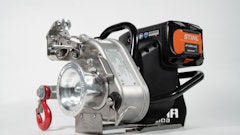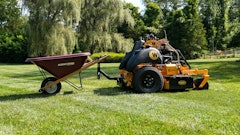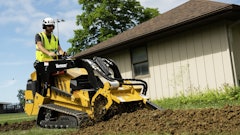
There are four things just about every lawn maintenance contractor can't live without: a mower, trimmer, backpack blower, and tolerance for performing repetitive tasks. Come fall, though, there's one more thing he might wish he had at his disposal: a wheeled blower.
Even though many of today's commercial-grade backpack blowers are extremely powerful, they still don't perform as efficiently as a wheeled blower in more intensive applications; at least that's what manufacturers of wheeled blowers are going to tell you. They might be onto something.
CFM vs. MPH
A lot of people become enamored by miles per hour. After all, that tells you how hard the blower is blowing. And if people judge the ferocity of a tornado or hurricane by how hard the storm's winds blow, this must be the logical way to judge the performance of a leaf blower.
To that end, some consumers become easily confused. In reviewing three popular brands of wheeled blowers—Little Wonder, Billy Goat and MacKissic—you can see that the mph ratings vary from around 150 to 200. Now look at a few popular commercial-grade backpack blowers on the market today:
- Stihl BR 600 Magnum – 201 mph, 712 cfm
- RedMax EBZ8500 – 206 mph, 908 cfm
- Echo PB-760LNH Backpack Blower – 214 mph, 535 cfm
- Husqvarna 580BFS – 206 mph, 908 cfm
As you can see, these backpack blowers also boast 200-mph wind speeds. But you'll also notice that the cfm ratings (cubic feet per minute) range from around 500 to 900. With a good commercial-grade wheeled blower, the cfm will be more in the range of 1,400 to 2,500 or better.
The cfm measures the amount/volume of air being produced by the blower, as opposed to the speed of that air. Volume is important when you're trying to move large volumes of debris, such as heavy, often wet piles of leaves in the fall.
That's not to say that speed (mph) isn't also important. Pierre Pereira of Billy Goat says a blower's performance is actually a combination of volume (cfm) and velocity (mph) and pressure (psi). When all three of those specs are up to snuff, you have a blower that will likely pack the power to get the job done for you.
Other things that affect performance
Billy Goat actually doesn't publish cfm ratings. Pereira says that's because there isn't an OPEI or ANSI standard for measuring cfm on a wheeled blower. Thus, manufacturers can pretty much measure how they want and say what they want. Billy Goat would rather not engage in this type of tit-for-tat marketing slugfest. Rather, Pereira says they prefer to ask their dealers to conduct side-by-side product comparisons to show contractors how the Billy Goats perform.
(EDITOR'S NOTE: An ANSI/OPEI standard does exist for handheld and backpack blowers, ANSI/OPEI B175.2 (“American National Standard for Outdoor Power Equipment – Internal Combustion Engine-Powered Handheld and Backpack Blowers and Blower-Vacuums – Safety Requirements and Performance Testing Procedures). This standard includes information for calculating volumetric airflow based on blower force measurement as part of the standards Annex C.)
As you're shopping for a wheeled leaf blower, that's a smart thing for you to do as well. Look at the key specs of cfm, mph and psi, but also ask your dealer to show you how the blower performs. And ask the dealer what other features the blower incorporates that can increase power and performance.
For instance, what about impeller design? Many blowers have a 17-inch-diameter impeller, which often features six or seven blades. Billy Goat's impeller features 16 blades for increased productivity.
Airflow control is also something to look at. Billy Goat units feature a fingertip-controlled Aim N Shoot feature. Little Wonder blowers feature a patented deflector that splits the air stream. The fastest-moving air is deflected to the base of a leaf pile to get it moving. The upper-level air speed is thus reduced, which helps keep the pile together as you move it.
Another thing you could look at is the discharge chute. Most blowers feature openings in the 3.5- to 6-inch range. Chute positioning is also important. Little Wonder says the chutes on its blowers are just 2 inches from the ground—right where those heavy piles of leaves are that you have to move. That feature helps to further increase productivity of Little Wonder blowers.
For more in wheeled blowers, visit our Product Guide.


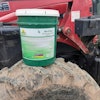

![Doosan Bobcat Wacker Neuson Stack 2ec Js Pb V6e[1]](https://img.greenindustrypros.com/mindful/acbm/workspaces/default/uploads/2025/12/doosan-bobcat-wacker-neuson-stack2ecjspbv6e1.CPyyz8ubHn.png?auto=format%2Ccompress&bg=fff&fill-color=fff&fit=fill&h=100&q=70&w=100)
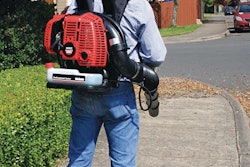

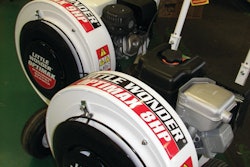




![Doosan Bobcat Wacker Neuson Stack 2ec Js Pb V6e[1]](https://img.greenindustrypros.com/mindful/acbm/workspaces/default/uploads/2025/12/doosan-bobcat-wacker-neuson-stack2ecjspbv6e1.CPyyz8ubHn.png?ar=16%3A9&auto=format%2Ccompress&bg=fff&fill-color=fff&fit=fill&h=135&q=70&w=240)
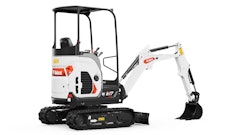


![T708 2025 Ga Tl11 R3 Hr [1 Q5 A1066]](https://img.greenindustrypros.com/mindful/acbm/workspaces/default/uploads/2025/10/t708-2025-ga-tl11r3-hr-1q5a1066.KcuUhTiF78.jpg?ar=16%3A9&auto=format%2Ccompress&fit=crop&h=135&q=70&w=240)
